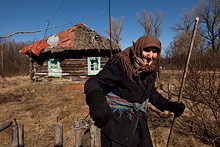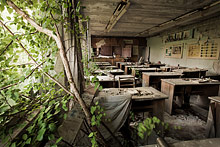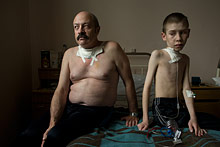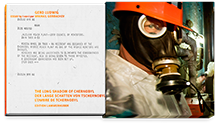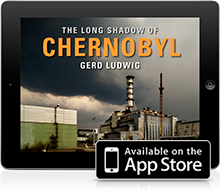The Chernobyl Nuclear Power Plant
On 26 April 1986, at 1:23 am, the Chernobyl Nuclear Power Plant’s reactor #4 blew up after operators had botched a safety test, triggering an explosion and a fire that burned for 10 days. The radioactive fallout spread over tens of thousands of square kilometers, driving more than a quarter of a million people permanently from their homes. Up to this very day, the long shadow of Chernobyl continues to darken lives – socially, environmentally, and physically.
The failed Chernobyl Nuclear Power Plant sits at the core of a restricted area commonly known as the Exclusion Zone. Radioactive remnants continue to smolder inside the so-called sarcophagus, a concrete and steel encasement hastily erected after the accident. Only intended to be temporary, it is leaky and structurally unsound. Scientists agree that it will ultimately give way, shaking loose enough radioactivity to cause a second disaster of even greater magnitude. For years, desperate efforts were underway to shore up the sarcophagus and protect its roof from collapsing. A recently added support structure is holding together the decrepit assembly of the leaning western wall.
“In 2005, an easing of the bureaucratic barriers helped me to venture deeper into the reactor than any western still photographer. After donning my protective gear, state-of-the-art Geiger counter, dosimeters and an extra layer of 3-4 mm thick plastic overalls, I followed a group of six workers into the belly of the beast. The workers, assigned to drill holes in the concrete to stabilize the roof, additionally wore gas masks and oxygen tanks. We had to move fast. The radiation levels in this area are so high that, despite our protective gear, access was limited to a maximum of 15 minutes per day.
It was the most challenging photographic situation I’ve ever encountered. The space was dark, loud, and claustrophobic; we rushed through dimly lit tunnels strewn with wires, pieces of shredded metal and other debris, and I struggled not to trip; while photographing I needed to dodge the spray of sparks from the drillers in highly contaminated concrete dust; and I knew that I had less than 15 minutes to capture arresting images of an environment that few have ever seen, and that I might never access again. The adrenaline surge was extraordinary. To exacerbate the situation, after little more than halfway through the allotted shift, our Geiger counters
and dosimeters began beeping – an eerie concert reminding us that our time was up. Torn between my natural instincts to survive and my desire as a photographer to stay longer, it was challenging to stay focused and work efficiently and fast, but without haste.‖ Gerd Ludwig
After long years of negotiations, a French consortium was commissioned to build a New Safe Confinement estimated to cost 1.5 billion euros. The 29,000 ton metal arc is 105 meters high and spanning 257 meters across and will eventually slide over the existing edifice to allow deconstruction of the ailing shelter. It will also lock in the approximately 200 tons of molten nuclear fuel rods, keeping the lethal remnants from endangering the globe. The completion date for the confinement has been pushed back repeatedly.
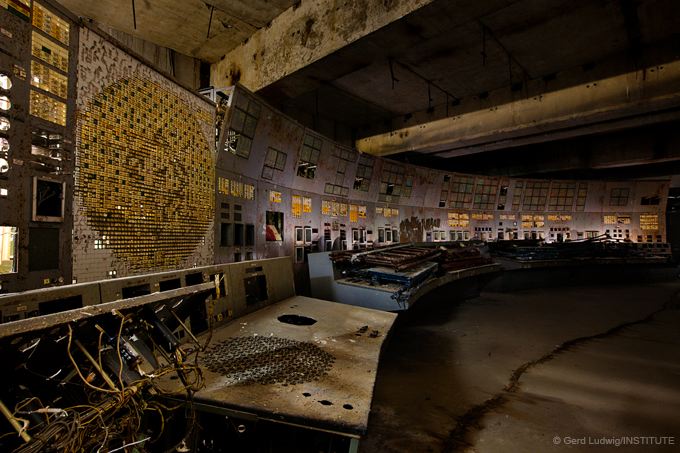
On April 26, 1986, operators in this control room of reactor #4 at the Chernobyl Nuclear Power Plant committed a fatal series of errors during a safety-test, triggering a reactor meltdown that resulted in the world’s largest nuclear accident to date. [Chernobyl Nuclear Power Plant, Ukraine 2011]

Workers, wearing respirators and plastic suits for protection, can only pause briefly on their way to drill holes for support rods inside the sarcophagus. It is hazardous work: radiation is so high that they constantly need to monitor their Geiger counters and dosimeters, and are allowed only one 15 minute stay in this space. [Chernobyl Nuclear Power Plant, Ukraine 2005]
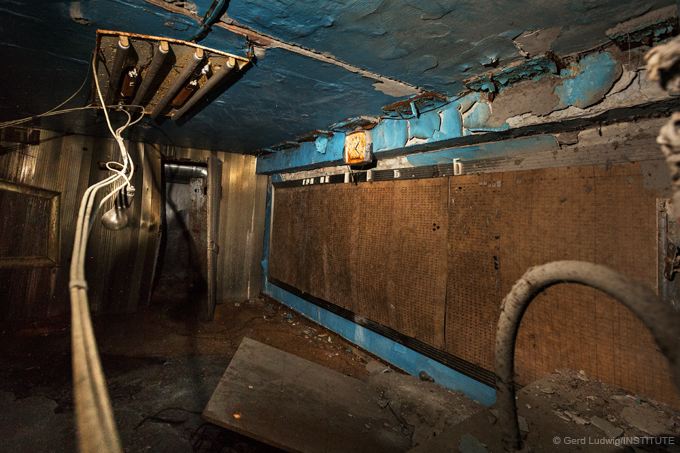
On April 26, 1986, at 1:23:58 a. m., a series of explosions destroyed the reactor in the building that housed Energy Block #4 of the Chernobyl Nuclear Power Station. The force of the explosions literally stopped time: the rusty clock inside this room in the reactor #4 indicates the time of the explosion. Nearly 28 years later, radiation here is still so high that access is limited to a few brief seconds. [Chernobyl Nuclear Power Plant, Ukraine 2013]
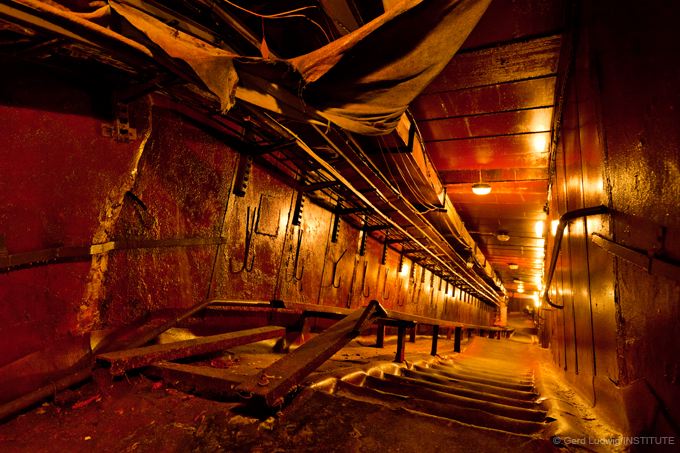
Although radiation levels only allowed for a few minutes of access, workers initially had to pass over hazardous ladders to a section underneath the melted core with life-threatening contamination. In order to facilitate faster access, a daunting hallway, called “the leaning staircase†was erected. [Chernobyl Nuclear Power Plant, Ukraine 2011]
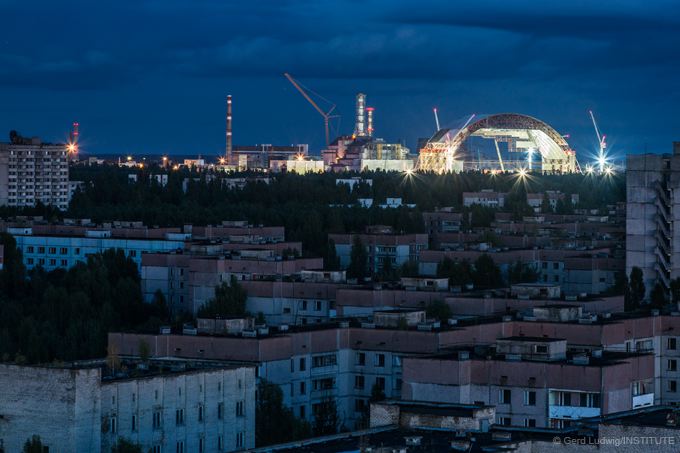
From the rooftops of the nearby city of Pripyat, the first section of the New Safe Confinement can be seen. The New Safe Confinement, a 29,000 ton metal arc, 105 meters high and 257 meters wide, will eventually slide over the existing sarcophagus to allow deconstruction of the ailing shelter. [Chernobyl Nuclear Power Plant, Ukraine 2013]
MORE GALLERIES:
All Photographs © Gerd Ludwig/INSTITUTE. All Rights Reserved.
For Licensing Information, Please Contact Us

